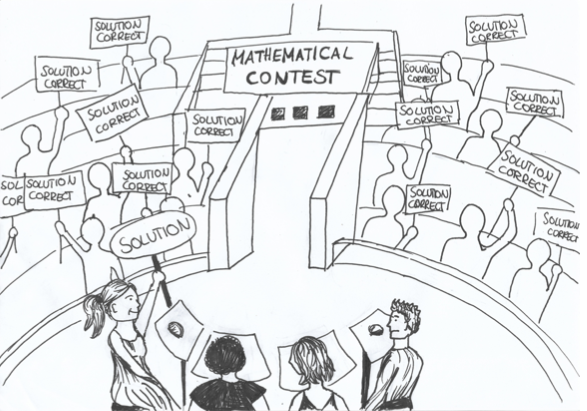
Hallo, today we will cover the first part of the topic ‚Bitcoin Mining‘. This post will answer the questions „Who creates Bitcoins? Who gets them and how many Bitcoins are being created?“. Lets start with a quick reminder from the 1st post. As you remember Buyer 2, lets call her Alice, bought some goods from you (the Merchant) and paid with Bitcoins.
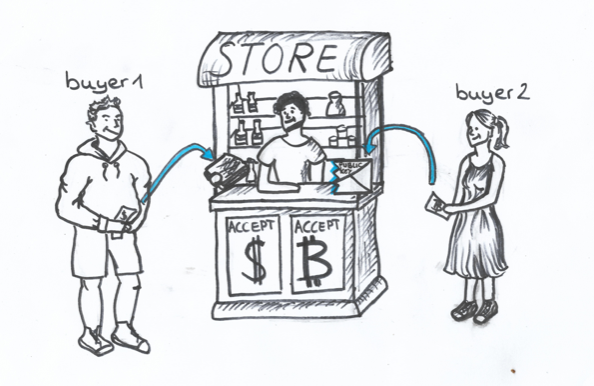
Alice put a full-envelope to your „public key“-right-side envelope. Lets open her envelope and see what is inside.
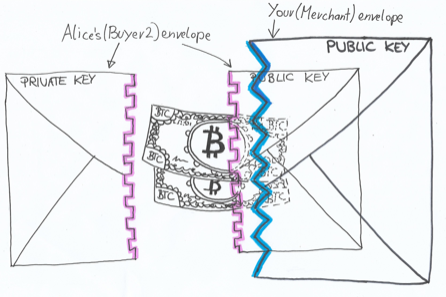
As you can see, there isn’t a full envelope attached in Alice’s „public key“-right-half envelope, but only Bitcoins. Why did she receive Bitcoins without an envelope, while you (the Merchant) received a full envelope with Bitcoins? Does the difference even matter? Well the reason why Alice got Bitcoins without an envelope is because she was the first person, who received newly created Bitcoins, which haven’t been sent to an „public key“-right half envelope before. So this transaction is the first transaction for these Bitcoins where they have been put in a „public key“-right-half envelope.
Who gave Alice the new Bitcoins?
Alice received the new Bitcoins from the Bitcoin Software.
Why did Alice get the new Bitcoins?
She got the new Bitcoins because she participated in a competition, which she won. The Bitcoins were the reward for winning. To get a better understanding, lets build an analogy here. When you download the Bitcoin-Software, you participate in the Bitcoin-Network. Imagine this Bitcoin-Network like an Amusement Park, lets call it „Bitcoin Park“. In order to join this Bitcoin Amusement Park you have to agree on rules which apply for everyone who wants to enter the Park. I will come back to these rules every now and then during this and following posts. In the real world, this list of rules is called 'Bitcoin-Protocol'. They state how participants in the Bitcoin-Network should behave and interact with each other.
Now back to our analogy. Alice stands in front of the „Bitcoin Park“. She reads the rules which applies for the „Bitcoin Park“, agrees with them and enters the Park. 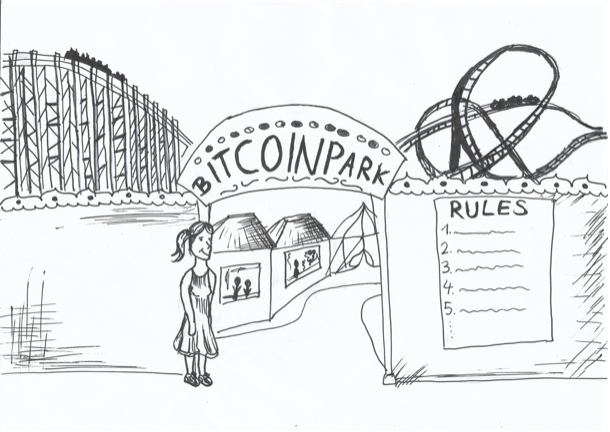
In the „Bitcoin Park“ (Bitcoin Network), there are several attractions where participants like Alice can join. It is like in a real amusement park where you have the choice to join the rollercoaster, the auto-scooter or any other attraction. One of these attractions in the Bitcoin-Park is a „mathematical contest“-stage. Alice decides to join there.
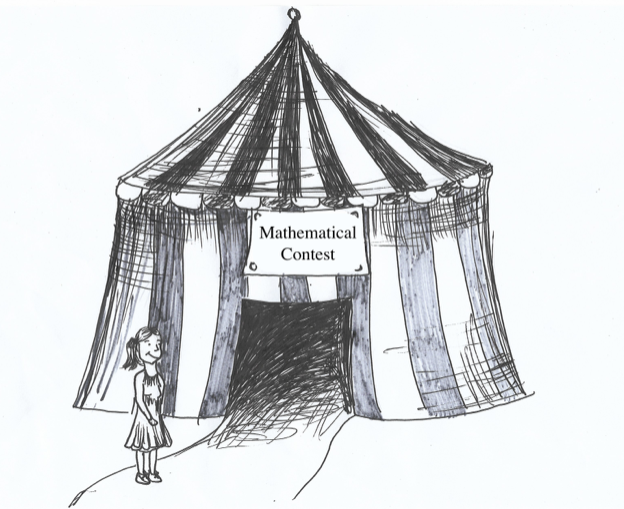
The „mathematic-contest“-stage is a competition, in which every visitor can participate and win a reward. Every 10 minutes there is a mathematical-task which has to be solved by the participants. The one who solves it first, will get a reward in Bitcoins. So Alice is joining the competition. She brought her „public key“-right-half envelope in case, she wins the contest (Remember, Bitcoins can only be send to a „public key“-right half envelope.). Well, Alice is really good at mathematics. She solved the mathematical task first. Now, the audience is verifying her solution. Each of them can easily check independently if it is correct. If the majority of the audience agrees that her solution is correct, the reward in Bitcoins is being handed out to the „public key“-right half envelope of Alice.
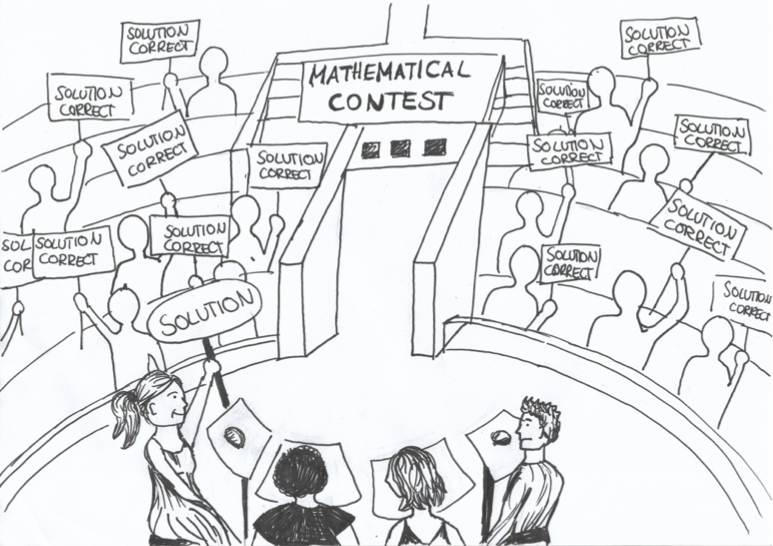
(Note: Before the reward is being handed out, there is another condition which has to be fulfilled by the winner. This condition has something to do with securing the entire Bitcoin-Network. This point is very important to understand. I will cover this topic in the next post, very soon. For now however, lets assume there is no other condition and Alice receives the reward right after the majority of the audience verifies that her mathematical solution is correct.)
So Alice received the reward. But how many Bitcoins did she get? Well, that depends at what time she participated in the competition. The mathematical contest started in 2009, at the same time when the „Bitcoin Park“ (Bitcoin) opened. From then on, every ten minutes there is a new mathematical competition which rewards the winner with Bitcoins. But the amount of the reward is decreasing over time.
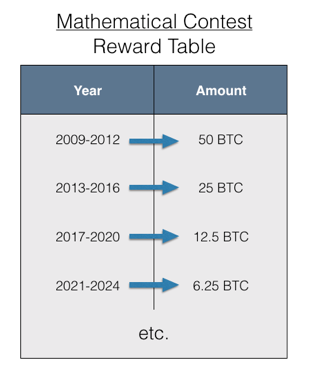
Every four years the reward for the solution is being halved. This halving-process makes sure that there will be only a maximum of 21 million Bitcoins at all. Hence, in approximately year 2140 there will not be a reward in form of newly created Bitcoins for the contest winner anymore.
Hence, Alice received 12,5 Bitcoins (Year: 2017) as a reward. In the real world, the participants in the mathematical-contest (like Alice) are called 'Miners' and the act of solving the mathematical-tasks is called 'Mining'. The miners literally competing against each other solving mathematical equations in order to get a reward in Bitcoins. As I mentioned, everybody can join the mathematical-competition and try to win the reward. The mathematical contest is the only place where new Bitcoins are being created (until approx. year 2140). Hence, each Bitcoin that exists, has been handed out first as a reward to the winner of one of the mathematical-contests (every 10 minutes) in the Bitcoin Park.
In the next post, I want to go more into detail regarding the "mathematical-contest" (Mining) and why it is so important for the entire Bitcoin-System.
Graphics made by @RatzFratz (still waiting for approval:) )
